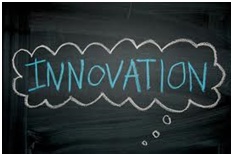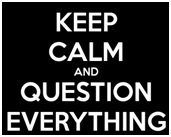|
 |
|
 |
Innovation
Innovation is...
Converting new ideas (from creativity) into new products and processes which satisfy customers better than competitors.
This may involve invention (making a completely new product).
New product development is vital, but it is also important to find new ways of improving processes like production and customer delivery.
How to be innovative
1. Vision, challenging aims and leadership Successful innovators often have a vision, a future ideal based on making something new and worthwhile for customers to enjoy (e.g. Walt Disney ,pictured right, wanted to “bring happiness to millions”). Every manager (including the chief executive) should encourage innovation and new ideas.
2. Creative corporate culture Innovation and creativity should be:
New ideas should be valued, encouraged and rewarded. A no blame culture is vital, in which everyone accepts that innovation involves failure and making mistakes.
3. Customer satisfaction
a) market research Find out customers’ needs and how they are likely to change in the future (see market research).
b) innovate, not imitate Be uniquely superior to competitors through marketing and branding, quality, great design and continuous improvement .
c) create new markets with revolutionary products (e.g. iPod and Google).
4. Long-term thinking and risk You need a long-term research and development (R&D) strategy, but innovation is very risky – many new products fail.
5. Empowerment, teamwork and purposeful freedom
Innovation results from:
a) control and freedom The freedom to create directed towards customer satisfaction (what Japanese companies like Honda have called harmony within discord).
b) small multi-functional teams (groups of 5 or 6 from different managerial functions like production, marketing and R&D).
c) asking people for ideas
6. Brainstorming This is getting people in small groups to suggest lots of new ideas to satisfy customers better – see creativity.
7. Reflect and relax People must have the freedom and time to think and reflect about possible solutions to customers’ problems without any fear of criticism. Leisure is a great time for new ideas, so employees shouldn’t:
They should think about a problem, relax and then go back to it.
8. Que Creative people continually challenge the way things are done and what others think (conventional wisdom). They constructively argue with other people (constructive conflict) and are passionate about new knowledge and continuous improvement For example, a worker at the British match maker, Swan Vesta, saved it millions by suggesting only putting sandpaper on one side of the matchbox.
9. Constant innovation Constant innovation is essential because of shorter product lifetimes caused by:
Many innovative companies like Sony have parallel development – developing new products but also their replacements as well.
10. Recruit creative people Creative people (like Albert Einstein, pictured right) should be:
11. Learn and get outside help
a) open innovaton This term was coined by the American, Henry Chesbrough (pictured right), to describe help given by outside innovators (e.g. universities), particularly via the Internet This has been used successfully by companies like IBM, Proctor and Gamble and Lego.
b) be imaginative Find new uses for things.
c) connect relevant issues together to solve a problem (holistic thinking) (e.g. health care is about preventing illness as well as curing it).
d) learn from other people’s experiences and ideas Jean Nidetch (pictured right) made Weight Watchers successful by using the idea of group support from Alcoholics Anonymous.
e) use intuition and common sense.
f) experiment Be adventurous and take risks.
12. Perspiration and perseverance Innovation is a long process with lots of failures and criticism. Thomas Edison (pictured right) tried 3,000 different materials for his light bulb and only two worked – so persevere!
Key quotes explained
“Harmony in discord” - Horace ,Roman poet (pictured right) Innovation needs continual questioning and debate (discord), but these must be directed towards customer satisfaction (harmony).
“Every act of creation is first of all an act of destruction” - Pablo Picasso ,Spanish artist).(pictured right) Creativity destroys old and useless ideas and replacing it with new and better ones. This is what the American economist, Joseph Schumpeter, called “creative destruction”.
“Who the hell wants to hear actors talk?” - Harry Warner (founder of the Warner Brothers film studio.(pictured right) Innovation makes old ideas obsolete, so the American campaigner for the blind, Helen Keller, said: “The heresy of one age becomes the orthodoxy of the next”.
“There is one thing stronger than all the armies in the world; and that is an idea whose time has come” - Isaac Newton (English scientist).(pictured right) Timing is vital to the success of any innovation.
Best books
Tom Burns and G.M. Stalker , The Management of Innovation (1961) Innovation needs informality, loosely defined roles, reward for performance and open communication in teams (an “organic” or “organismic” structure). A “mechanistic” structure (hierarchical with strictly defined roles and power from position) is best suited to stable conditions.
Rosabeth Moss Kanter (pictured right), The Change Masters (1984) Innovative companies:
(For more detail seeThe Change Masters in the Business Books section).
Richard Pascale (pictured right), Managing on the Edge (1991) Innovation comes from questioning everything and “constructive contention” (i.e. challenging other people’s views and constructive argument. Success is dangerous because it creates complacency or, as Pascale puts it: “Nothing fails like success”. (For more detail see Managing on the Edge in the Business Books section).
Clayton Christensen (pictured right) , The Innovator’s Dilemma (1997) Successful companies don’t innovate because they have so much money invested in existing products. (For more detail see The Innovator’s Dilemma in the Business Books section).
C.K. Prahalad (pictured right) and M.S. Krishnan (pictured right below), The New Age of Innovation (2002)
Peter Drucker (pictured right) , Innovation and Entrepreneurship (1985) Innovation comes from exploiting these opportunities:
|
|
|
||
|
|
|
||
|
||
| Copyright © wisdomtowin.com All Rights Reserved | ||
|



















 “Co-creation” is vital i.e. innovation in partnership with customers (e.g.
Facebook and Wikipedia).
“Co-creation” is vital i.e. innovation in partnership with customers (e.g.
Facebook and Wikipedia).
